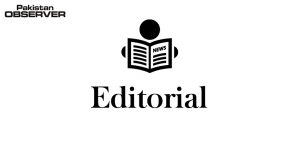PRIME Minister Imran Khan, on Monday, launched an ambitious Rs 1.4 trillion Kamyab Pakistan Programme (KPP) , aimed at extending micro loans to entrepreneurs, small business and farmers at zero per cent mark-ups without collateral.
The key focus is to provide loans to households in the lowest strata, registered with the NSER of the Ehsaas Programme.
Speaking on the occasion, the Prime Minister announced a 40% targeted subsidy for the poor on purchase of essential food items, saying the special step would provide relief to low-income groups against inflation as they would get subsidies on wheat, flour, sugar and ghee (cooking oil).
The comprehensive programme has the potential to provide significant relief to the marginalized segments of the society as it covers aspects like food, housing and income generation for over three million families over the next three years.
Given its scope and benefits, the programme can rightly be termed as a move towards fulfilment of the oft-repeated commitment of Imran Khan regarding establishment of a welfare state on the pattern of State of Madina.
The Kamyab Pakistan Programme has been designed to foster a ‘Bottom-up’ approach as envisaged by Prime Minister Imran Khan, with an aim to empower all those who are under-privileged and belong to marginalised sections of the society.
Loans will be offered to families with a cumulative average monthly income of less than Rs 50,000 with priority to be given to beneficiaries of Ehsaas programme registered with the National Socio-Economic Registry (NSER).
The micro loans will be disbursed under a wholesale arrangement between banks/development finance institutions/Pakistan Mortgage Refinance Company and the microfinance banks and institution/housing finance companies.
There are no details as yet about the ceiling available for each family on account of food subsidy but given the fact that prices of wheat flour, sugar and cooking oil are hiking on a regular basis, 40% subsidy that the Prime Minister has pledged would help poor families balance their budgets and spend more on their children.
As a majority of the poor lives in the rural areas of the country where agriculture is the main source of income, the decision to provide agricultural loans to farmers with landholdings up to 12.5 acres, micro loans up to Rs150,000 (per crop) for procurement of agricultural inputs and loans up to Rs200,000 for machinery and equipment at zero mark-up rate would surely help boost productivity and increase income of the rural folk.
Similarly, for people living under the poverty line it is next to impossible to realize their dream of having a house of their own or rebuild dilapidated homes because of wholesale increase in the cost of construction.
In this backdrop, the inclusion of housing in the framework of Kamyab Pakistan Programme is also a welcome development.
A new tier titled Naya Pakistan Low Cost Housing Scheme has been introduced wherein loans of up to Rs2.7 million for Naya Pakistan Housing and Development Authority (NAPHDA) and Rs2 million (for non-NAPHDA) projects will be given at highly subsidised rates for a maximum of 20 years and a minimum of five years.
This would take care of the needs of most of the shelterless people in the country provided loans are extended in a transparent manner.
One of the major hindrances in the way of poor man’s access to the credit facilities was the condition of collateral and this aspect has also been addressed as there would be no need for collateral under KPP but there are serious questions about prospects of recovery of such loans.
It seems for the first time a genuine attempt is being made to help people stand on their own feet financially as loans would be offered for small businesses and start-ups at zero mark-up in both rural and urban areas under the programme. Loan size is up to Rs500, 000 and repayment will be in easy instalments.
Maximum number of people would hopefully be able to benefit from these loans as sectors like dairy, livestock, poultry and fisheries are also included in these programmes for which most of the people have basic know-how.
We hope based on response and practical implementation of the programme, the Government would increase its allocations and review the criteria and the procedure being used for determining eligibility of the citizens for inclusion of their names as prospective beneficiaries.










